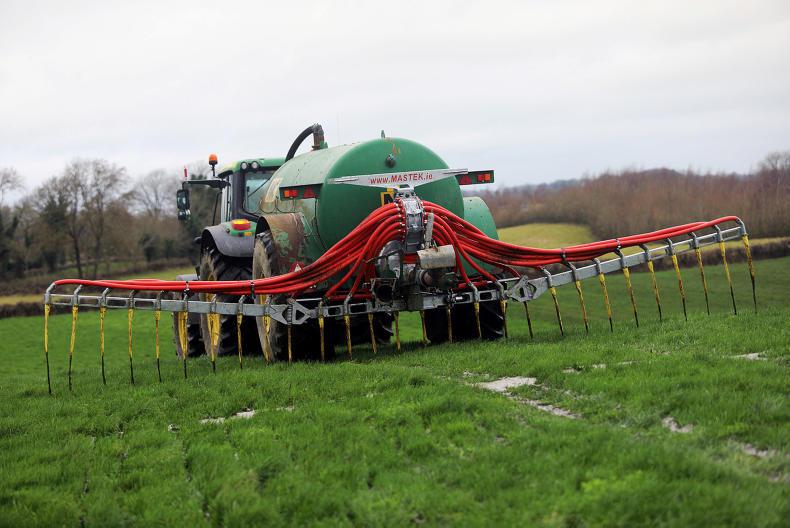Across a series of three online events last week organised by DAERA, various scientists outlined the issues around ammonia emissions and what will be required in NI to meet international targets.
The events were a prelude to a draft ammonia strategy from the Department, expected to go out to consultation later this year, and which will set the future policy agenda in NI. With agriculture accounting for 96% of emissions, and most internationally designated sites in NI exceeding their critical load of nitrogen (from ammonia), farming is under pressure to take action. What was clear from the events last week is that while low-emission slurry spreading is the one single change that could have the biggest impact on ammonia, it in itself is not enough.
The estimates presented by AFBI scientists considered a scenario where 50% of slurry is spread using a trailing shoe and 50% using a trailing hose (dribble bars). In total, it would cut agricultural emissions by 10%.
But to meet international obligations, and more importantly for DAERA, to improve the situation at designated sites, scientists are talking about 25% reductions.
Work presented last week by Tom Misselbrook, a researcher at Rothamsted Research in England, looked at 10 different measures, implemented over the next five to 10 years, that collectively would lead to a 25% reduction.
As well as low-emission slurry spreading, other measures included extending the grazing season for all cattle by two weeks, lowering crude protein in diets of all livestock, covering 30% of above ground slurry stores and a 100% switch from straight to protected urea. In addition, 60% of layers are kept in houses with belt-removal of manure, and 35% of beef cattle on slatted systems that are frequently scraped.
How practical some of this is, might be questionable, although new technologies will also emerge that will help to reduce emissions. But it does give an insight into the significant changes the industry will be forced to embrace over the coming years.
Read more
Sustainability: Meeting ammonia targets the key challenge for Irish agriculture
Tackling ammonia to cost millions – Poots
Across a series of three online events last week organised by DAERA, various scientists outlined the issues around ammonia emissions and what will be required in NI to meet international targets.
The events were a prelude to a draft ammonia strategy from the Department, expected to go out to consultation later this year, and which will set the future policy agenda in NI. With agriculture accounting for 96% of emissions, and most internationally designated sites in NI exceeding their critical load of nitrogen (from ammonia), farming is under pressure to take action. What was clear from the events last week is that while low-emission slurry spreading is the one single change that could have the biggest impact on ammonia, it in itself is not enough.
The estimates presented by AFBI scientists considered a scenario where 50% of slurry is spread using a trailing shoe and 50% using a trailing hose (dribble bars). In total, it would cut agricultural emissions by 10%.
But to meet international obligations, and more importantly for DAERA, to improve the situation at designated sites, scientists are talking about 25% reductions.
Work presented last week by Tom Misselbrook, a researcher at Rothamsted Research in England, looked at 10 different measures, implemented over the next five to 10 years, that collectively would lead to a 25% reduction.
As well as low-emission slurry spreading, other measures included extending the grazing season for all cattle by two weeks, lowering crude protein in diets of all livestock, covering 30% of above ground slurry stores and a 100% switch from straight to protected urea. In addition, 60% of layers are kept in houses with belt-removal of manure, and 35% of beef cattle on slatted systems that are frequently scraped.
How practical some of this is, might be questionable, although new technologies will also emerge that will help to reduce emissions. But it does give an insight into the significant changes the industry will be forced to embrace over the coming years.
Read more
Sustainability: Meeting ammonia targets the key challenge for Irish agriculture
Tackling ammonia to cost millions – Poots






 This is a subscriber-only article
This is a subscriber-only article










SHARING OPTIONS: